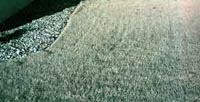Resource Library
Plant of the Week: Zoysiagrass, Meyer Z-52
The University of Arkansas System Division of Agriculture does not promote, support or recommend plants featured in "Plant of the Week." Please consult your local Extension office for plants suitable for your region.
Plant of the Week
Meyer Z-52 Zoysiagrass
Latin: Zoysia japonica 'Meyer Z-52'

Gardeners recognize lawns as a necessary evil in the landscape.
While most of us would like to dig it all up and replace it with real plants -- flowers
and shrubs and the like -- we recognize that without a garden staff to maintain the
planting we best control our impulses.
Therefore, selecting the correct lawn is critical because we want a turf that will
set off our plantings without become an unnecessary maintenance burden or becoming
so invasive we have to give flower beds over to marauding waves of grass.
Meyer zoysiagrass is a grass that provides characteristics that most gardeners like
in a turfgrass and can easily live with.
Meyer zoysiagrass is probably the best warm season lawn grasses for Arkansas and
is the most popular of the several strains of zoysiagrass that are available from
the sod industry. It is one of the most cold hardy zoysias and is grown extensively
across the U.S. in areas south of St. Louis all the way to the southern tip of Florida.
In the winter it has an attractive golden brown color that is much more appealing
than the gray-brown of bermudagrass. Meyer forms a dense mat that is so thick it will
crowd out even some of the more troublesome weeds. It does spread by stolons and is
always on the move but its rate of spread, unlike bermudagrass, is manageable.
Meyer zoysiagrass was released jointly by the U.S. Department of Agriculture and
the U.S. Golf Association Greens Section in 1951. It was tested throughout much of
the country under the trial name of "Z-51", a designation it has been slow to shake.
The original plants were grown from Korean seeds collected in 1930. The Korean site
where the seeds were collected was along the Yalu River and was first identified by
USDA plant explorer Frank Meyer who visited the site in the spring of 1906. Meyer,
who later died while collecting plants in China, was instrumental in introducing many
Asian plants into the U.S., including many soybean selections, the jujube, and the
seeds that later produced the Bradford ornamental pear. The turfgrass is named in
his honor.
Meyer zoysiagrass does not produce viable seed and must be propagated through vegetation.
It is readily available as sod and will give an instant lawn. It is sold during much
of the year as fresh-dug sod, but quicker establishment usually comes with late spring
or early summer sodding.
For those with more patience or less cash on hand, plugging is the way to establish
the lawn. Three-inch plugs are planted on one foot grids in the lawn area. Coverage
will usually require two growing seasons but establishment costs, if you do the plugging
yourself, are about 10 percent of the cost of sodding.
Zoysiagrass does best in full sun. While it is often touted as "more shade tolerant
than bermudagrass", that comparison is meaningless because bermudagrass must have
full sun all the time. Zoysia will grow under very light shading conditions but is
not the lawngrass to choose if much shade is present.
Meyer zoysiagrass is drought tolerant and relatively pest free. It will develop a
leaf rust disease but the malady is usually not considered too serious for the grass,
but the orange spores play havoc with your shoe shine.
Zoysiagrass will respond well to fertility, but high rates of fertility should be
avoided because it increases the incidence of rust and other diseases and results
in more mowing.
By: Gerald Klingaman, retired
Extension Horticulturist - Ornamentals
Extension News - June 25, 1999
The University of Arkansas System Division of Agriculture does not maintain lists of retail outlets where these plants can be purchased. Please check your local nursery or other retail outlets to ask about the availability of these plants for your growing area.